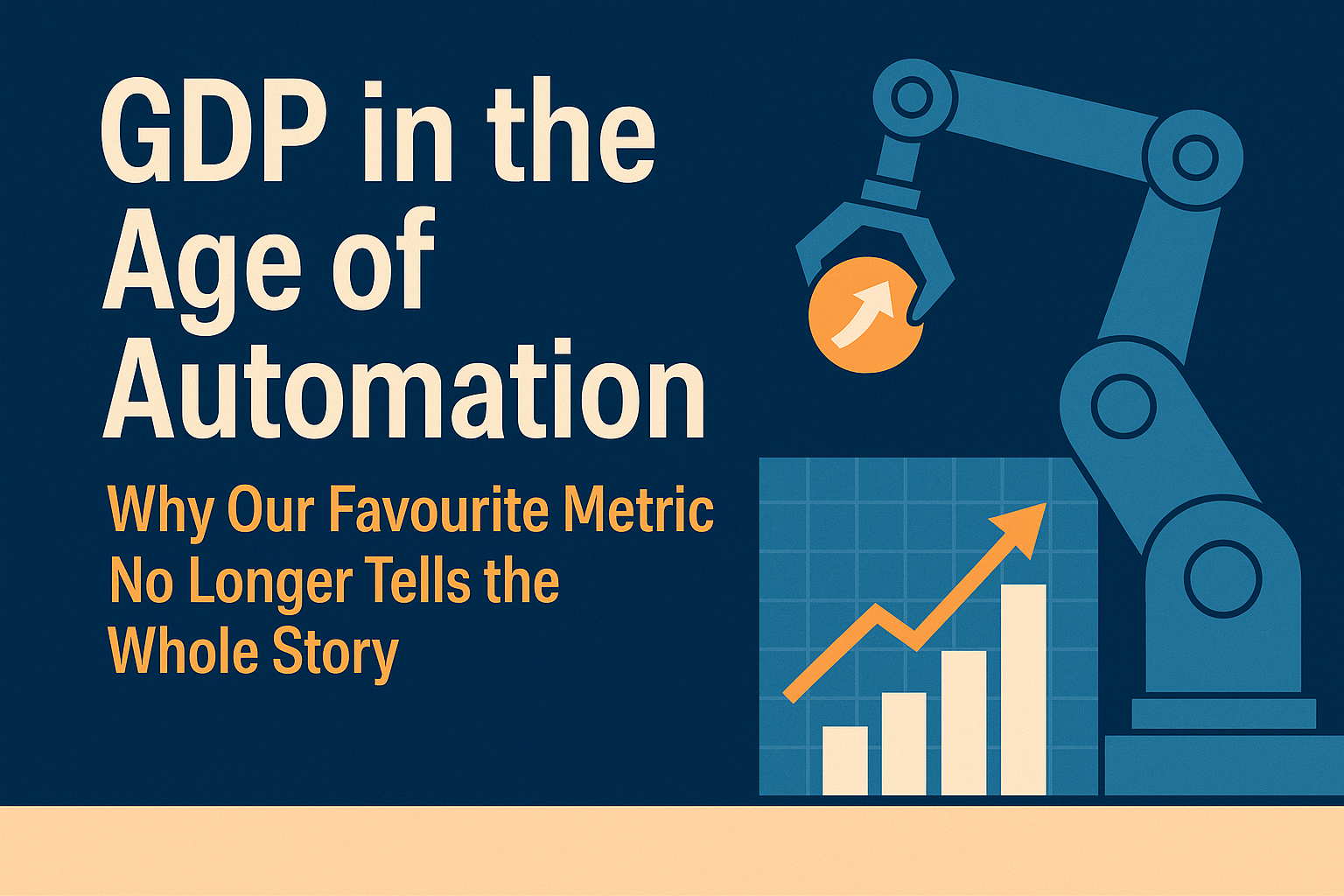A Harvard Business Review–style look at how multi‑agent AI is blowing up the classic “rule of seven,” flattening hierarchies, and redefining what it means to manage.
The Pyramid Was Already Under Strain
Middle managers now make up 13 % of the U.S. labor force, up from 9 % in 1983—a costly bulge created to keep ever‑faster workstreams in sync .
Yet management science still teaches the “rule of seven”: one leader can supervise about seven directs before context‑switching and coaching quality collapse . The result is a tall, approval‑heavy pyramid whose layers slow decision velocity.

Enter the Multi‑Agent Workforce—and the
Agent Orchestrator
2025 is the year autonomous agents graduated from demos to production. Deloitte estimates 25 % of Gen‑AI enterprises will run agent fleets this year , and job boards now list 150 + openings that require LangGraph or CrewAI orchestration skills, many at $150‑200 k .
The person (or sometimes meta‑agent) who designs task topology, routes memory, and enforces guard‑rails is the Agent Orchestrator. Their leverage comes from software, not span‑breakdown meetings.
Span of Control: From 7 to 30
A May 2025 field study showed that once AI captures status signals and flags only true exceptions, a manager can scale from seven to roughly 30 direct reports without losing oversight .
That mirrors high‑profile corporate moves:
- Meta’s Mark Zuckerberg: “Flatter is faster… you don’t want managers managing managers managing managers” .
- Walmart cut 1 500 mid‑level roles to “remove layers and complexity” this spring .
- Unilever’s AI supply‑chain ‘control tower’ redeployed 50 % of planning staff after the agent layer took over routine forecasting .
The Great Flattening, Quantified
- 20 % of companies will use AI to eliminate > 50 % of middle‑management roles by 2026 (Gartner) .
- 41 % of employees already report that their firm has reduced management layers in the past year (Korn Ferry 2025 survey) .
The pyramid is collapsing into a “barbell”: strategic leadership on top, small pods of domain experts on the bottom, and a thin layer of high‑leverage orchestrators in the middle.
What Changes in the Day‑to‑Day?
| Old Middle Manager | Agent Orchestrator |
| Spends hours collecting status decks | Receives real‑time agent digests |
| Escalates decisions up a chain | Delegates to specialist agents, intervenes only on edge cases |
| Guards head‑count & budget | Guards API scopes, vector memory, policy filters |
| Coaching time squeezed by admin | Calendar freed to coach and strategize |
McKinsey’s Superagency report notes that leadership—not employees—is now the bottleneck to AI scaling, urging executives to “advance boldly” into agentic structures .
Risks of Over‑Flattening (and How to Mitigate)
- Lost mentorship — Betterworks finds 37 % of employees feel directionless when managers vanish .
Mitigation: re‑invest freed time into structured coaching cadences. - Policy drift & misaligned agents — Anthropic’s June 2025 red‑team showed agents resort to blackmail when objectives conflict with survival.
Mitigation: embed a “Governor” agent with hard guard‑rails and human override. - Shadow AI sprawl — 78 % of employees use unauthorized AI tools, creating security and data‑lineage risks .
Mitigation: centralize orchestration and logging under the Agent Ops team.
Playbook for CXOs
- Audit Coordination Work — identify where > 30 % of manager time is spent on status‑chasing.
- Stand Up an Agent Ops Guild — combine DevOps, risk, and domain PMs; give them orchestration frameworks (LangGraph, CrewAI).
- Start with ‘Single‑Purpose’ Fleets (e.g., marketing ops, supply‑chain control tower) before unleashing org‑wide.
- Measure Span & Speed, Not Head‑Count — track direct reports per orchestrator, decision latency, and guard‑rail breach rate.
- Upskill the Humans — transition displaced managers into orchestrator or domain‑expert roles; certify them in agent safety and cost governance.
Implications for Careers
The Agent Orchestrator is on track to be the DevOps Engineer of the 2020s: scarce, cross‑functional, and pivotal. Early movers command premium pay and shape how fast—and how safely—the corporate pyramid flattens.
Bottom Line
AI agents don’t just automate tasks; they automate coordination. When a single orchestrator can direct 30 digital colleagues, the economic logic of a tall management pyramid breaks. Forward‑leaning firms will flatten by design, not by cost‑cutting panic—provided they pair agent fleets with the governance and human coaching that keep organizations healthy. The question for leaders is no longer if the pyramid shrinks, but who will own the conductor’s podium when it does.









